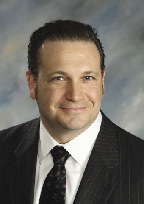Over the last 50 years, significant amounts of commercial and residential development have moved out of the traditional urban centers of New England into the adjacent suburbs and beyond. As a result of this shift in development, many residential and commercial projects have been constructed in areas that lack the water and wastewater infrastructure to readily support them. Furthermore, many projects constructed in urban centers have found mitigation and connection fees associated with water and sewer service to be a significant hurdle to development.
In response to these challenges, a small but growing number of developers have discovered that on-site wastewater treatment is a viable, cost effective and environmentally friendly way of dealing with the wastewater generated by almost any sized project. Just like many other aspects of land development, on-site wastewater treatment is not without its own set of challenges and opportunities. Regulations, land requirements, and a complex technological landscape can all make implementing an on-site wastewater treatment system difficult. However, following several simple rules can help you avoid the pitfalls and dramatically improve your chances of long term success.
Don't Buy Off The Rack - Many Developers buy a 'packaged' or 'off the shelf' wastewater treatment system in an effort to conserve front end capital costs. While the idea with these systems is that their modularity makes them inexpensive to build, the fact is that each project is truly unique and demands some level of customization. Developers should work with engineers and vendors alike to make sure that the selected treatment system can meet the unique requirements of the project. One way of ensuring a good fit is to closely examine performance data from similar systems. Past performance can be indicative of future success, and a competent vendor shouldn't have to explain away numerous performance problems.
Be Aware of Your Surroundings - Nobody wants to say that they live or work next door to the wastewater treatment plant, so mitigating the visual impact of the facility on residents and neighbors is essential. Plan to design the plant exterior to match local architecture and include systems for odor control and sound attenuation. If residents don't know that the treatment plant is right under their nose, then they are less likely to smell it.
Don't Throw The Baby Out With The Bathwater - It may be cliché, but new surface water discharges in New England are a thing of the past and new facilities must consider groundwater discharge and water reuse alternatives. While discharging to the ground is the easiest solution, water reuse may make sense for high density sites or areas with poor soil conditions. Reusing treated effluent might also be a great alternative for projects seeking LEED certification - and with rising water rates, it can make financial sense too. Every gallon of grey water used for toilet flushing and drip irrigation, is a gallon of potable water saved.
Design for Operability - Building the most spartan plant possible that incorporates minimal control systems may save money up front, but will often lead to performance problems in the future. Adding a nominal amount of building area, a few additional valves, or some simple control systems can greatly improve operability and long term performance. Improved performance typically equates to fewer permit compliance problems and lower operating costs. Rising energy costs will only make operator-friendly designs more cost effective in the future.
Assemble A Winning Team - Many site design engineers will attempt to deliver wastewater design services by showing a packaged treatment system on their plans. Unfortunately, this approach can lead to change orders during construction and treatment system performance problems down the road. When selecting an engineer, it is essential to find a firm with local experience in permitting, process design, mechanical/electrical design, and structural design. Securing the services of an experienced engineer can save time and money for years to come.
Tighe & Bond has assisted numerous educational, commercial, and residential clients in the permitting and design of wastewater treatment facilities throughout New England. Our firm provides a comprehensive suite of design services and our projects include some of the region's most innovative designs. Our portfolio includes Connecticut's first municipal and largest membrane bioreactor facility, Massachusetts' first membrane sludge thickener, and several projects which reuse treated effluent on-site.
Ian Catlow, PE is a senior project engineer and Fran Hoey, PE is senior vice president and director of real estate development at Tighe & Bond, Westfield, Mass.
Tags:
Decentralized wastewater treatment is a cost-effective and sustainable design solution
March 20, 2008 - Connecticut










